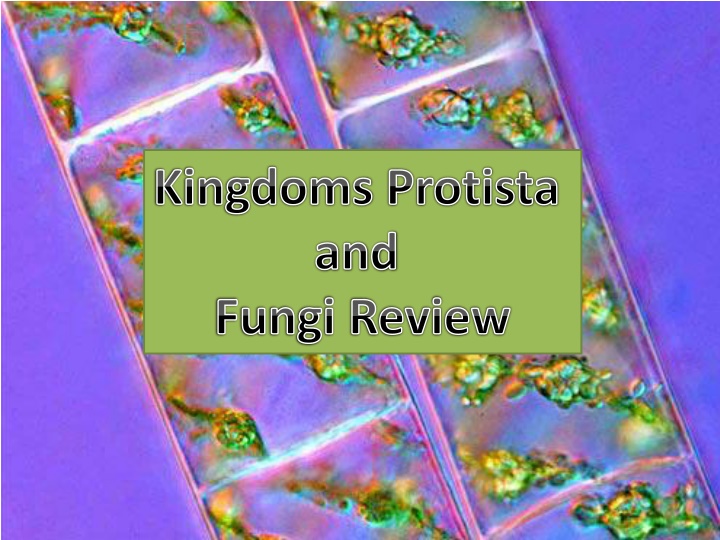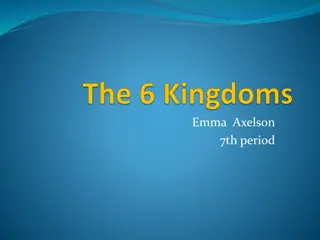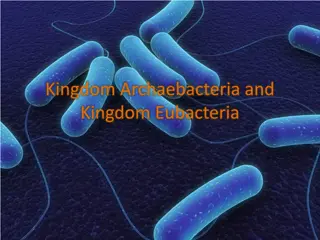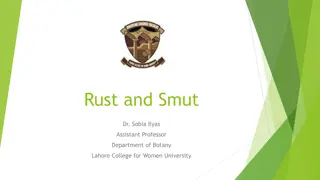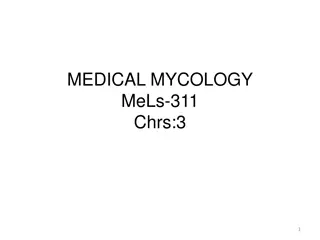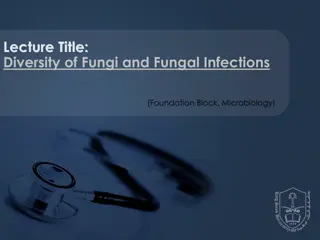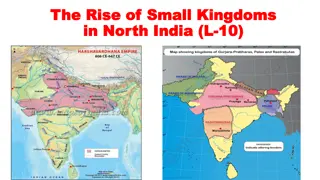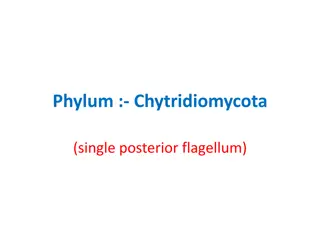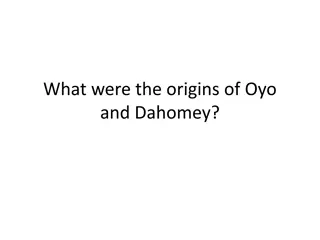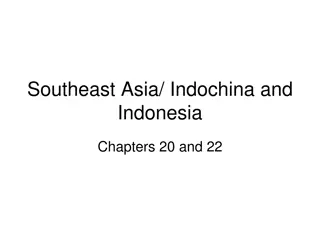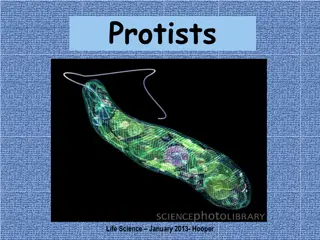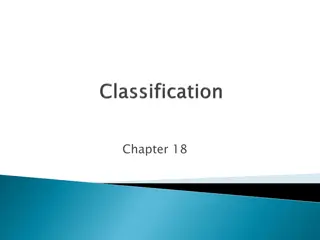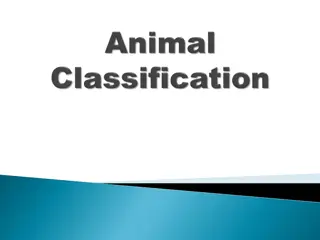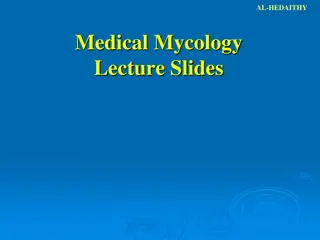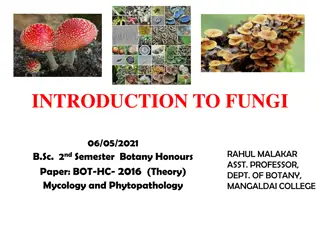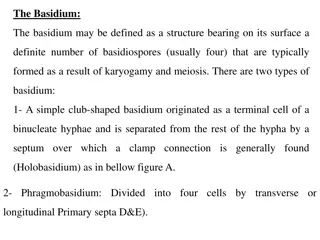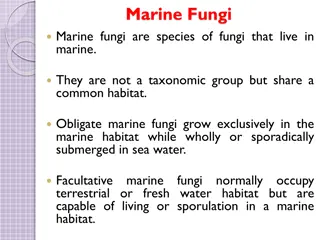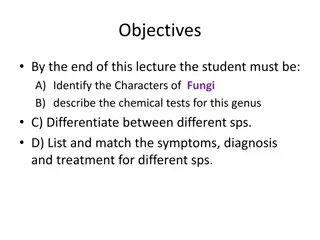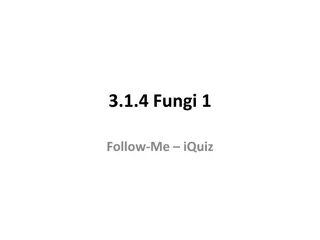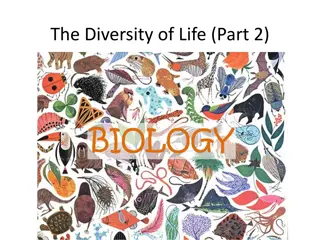Kingdoms Protista and Fungi: Characteristics and Structures
Dive into the world of Protista and Fungi through this interactive review. Discover the unique characteristics of protists, identify different types of protists, and learn about essential structures in protists such as contractile vacuoles. Explore the significance of compounds like fucoxanthin in brown algae and understand the reproductive cells of fungi. Delve into the classification of fungi based on spore-holding structures and explore the asexual reproduction methods in yeast cells. Uncover the essential role of hyphae in multicellular fungi as the key components of their bodies.
Download Presentation

Please find below an Image/Link to download the presentation.
The content on the website is provided AS IS for your information and personal use only. It may not be sold, licensed, or shared on other websites without obtaining consent from the author.If you encounter any issues during the download, it is possible that the publisher has removed the file from their server.
You are allowed to download the files provided on this website for personal or commercial use, subject to the condition that they are used lawfully. All files are the property of their respective owners.
The content on the website is provided AS IS for your information and personal use only. It may not be sold, licensed, or shared on other websites without obtaining consent from the author.
E N D
Presentation Transcript
Kingdoms Protista and Fungi Review
What is a characteristic of all protists? A. eukaryote B. heterotroph C. unicellular D. multicellular
What type of protist is pictured below? A. water mold B. sarcodine C. ciliate D. flagellate
A protist structure that collects water and expels it from the cell is called a A. macronucleus B. contractile vacuole C. food vacuole D. oral groove
Fucoxanthin is a brown compound that gives the brown algae and diatoms their color. It also functions in photosynthesis. This compound is a(n) A. lichen B. antibiotic C. toxin D. pigment
The tiny reproductive cell of fungi that is surrounded by a protective covering is called a A. slime mold B. bud C. spore D. pellicle
Fungi that infect plants causing diseases such as corn smuts and wheat rusts are A. decomposers B. mutualists C. antibiotics D. parasites
The fungi are classified into 3 groups based upon the structures that hold their spores. These structures are called A. organelles B. cilia C. fruiting bodies D. flagella
Unicellular yeast cells undergo a form of asexual reproduction called A. sporulation B. Binary fission C. conjugation D. budding
The branching, thread-like tubes that make up the bodies of multicellular fungi are A. gills B. hyphae C. fruiting bodies D. holdfasts
The picture below shows A. regeneration B. Sexual reproduction C. budding D. binary fission
Which of the following statements is true of diatoms? A. Many glow in the dark and can cause red tides C. Agar and carageenan are useful substances extracted from diatoms B. They are heterotrophs that feed mainly on bacteria D. They are unicellular protists with beautiful, glass-like walls
Which of the following statements is true? A. The protozoa are one-celled autotrophs with cells walls C. The protozoa are heterotrophs and most can move from place to place D. The protozoa are classified into two groups based on the way they move and live B. Flagellates include the protozoa that cause malaria and toxoplasmosis
Word Bank funguslike protists lichen decomposers red algae mycorrhiza downy mildew heterotrophs brown algae A fuzzy protist that is a parasite of crop plants. Downy mildew
Word Bank funguslike protists lichen decomposers red algae mycorrhiza downy mildew heterotrophs brown algae Mutualistic relationship between a fungus and a plant root. mycorrhiza
Word Bank funguslike protists lichen decomposers red algae mycorrhiza downy mildew heterotrophs brown algae Slime molds, water molds, and downy mildews. Funguslike protists
Word Bank funguslike protists lichen decomposers red algae mycorrhiza downy mildew heterotrophs brown algae Organisms that must consume their food. heterotrophs
Word Bank funguslike protists lichen decomposers red algae mycorrhiza downy mildew heterotrophs brown algae Very large autotrophic protists with holdfasts and gas-filled bladders. Brown algae
Word Bank funguslike protists lichen decomposers red algae mycorrhiza downy mildew heterotrophs brown algae Organisms that break down chemicals in dead plants and animals. decomposers
Word Bank funguslike protists lichen decomposers red algae mycorrhiza downy mildew heterotrophs brown algae Mutualistic relationship between fungi and algae. lichen
Word Bank funguslike protists lichen decomposers red algae mycorrhiza downy mildew heterotrophs brown algae Protists with pigments that can absorb the light in deep ocean water. Red algae
Word Bank Absorb slime molds autotrophs Club fungi sac fungi protists fungi antibiotics parasites Eukaryotes that cannot be classified as plants, animals, or fungi are called _________ . protists
Word Bank Absorb slime molds autotrophs Club fungi sac fungi protists fungi antibiotics parasites Protists that begin as tiny amoeba-like cells, but that can form large multicellular masses are called __________ . Slime molds
Word Bank Absorb slime molds autotrophs Club fungi sac fungi protists fungi antibiotics parasites Morels, truffles and yeasts are __________ used in cooking or baking. Sac fungi
Word Bank Absorb slime molds autotrophs Club fungi sac fungi protists fungi antibiotics parasites Protozoa that feed on the cells or body fluids of a host organism are called __________. parasites
Word Bank Absorb slime molds autotrophs Club fungi sac fungi protists fungi antibiotics parasites Fungi use hyphae to ooze digestive chemicals and then to _____________ their food. absorb
